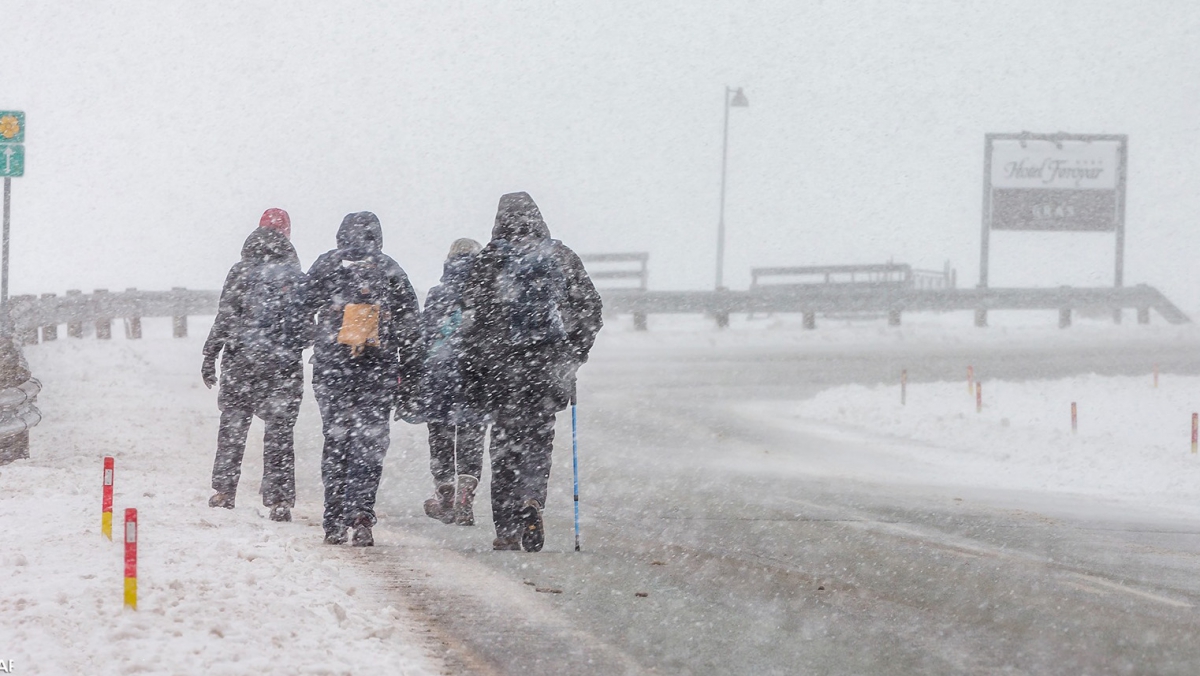Accommodation
18. Feb 2020
Hotels experience big growth

Unusually high growth in 2019
The graph below shows a steady annual growth in the number of hotel overnight stays and check-ins since overnight stays statistics began in 2013. The graph also reveals a significantly higher growth in 2019 than in previous years.
The caption below the graph defines the terms “overnight stay” and “check-in”. Note that only stays in hotels are listed, as other forms of accommodation, such as Bed & Breakfast, houses/apartments and camping, use registration methods which are incomplete for statistical purposes and may skew the overall figure. All types of registered overnight stays are, however, listed in the statistical database and categorised into the various accommodation types.
It should also be noted that this list of overnight stays does not include Airbnb, since Statistics Faroe Islands does not have access to data on this type of accommodation.
Nationalities are based on country of residence, not citizenship.
Big increase in early summer and late autumn 2019
The graphs below show the monthly pattern for overnight stays and check-ins. There is a steady, steep increase from the start of the year, peaking in in July and then gradually decreasing toward the end of the year. Notice the steep increase for 2019 in April, May and June and also in October and November.
The graphs also show that for every year since these registrations began, the monthly number of overnight stays tends to exceed the number from the corresponding month the previous year.
Danes top the list again
As in previous years, Danish residents featured most prominently on the list of hotel stays, making up 30% of the total figure. Faroese residents are second, at 18%, which is also in line with the trend from previous years. European countries excluding the Nordic Region represent 23%, and Nordic countries excluding the Faroe Islands represent 19%. Then there is a drop to regions outside of Europe, including the US, Asia, the Pacific region and Africa, representing a total of 10%.
The table below lists overnight stays according to country of residence. A noteworthy point here is that North America is ahead of the UK, Iceland, Sweden and Germany.
The biggest increase in number is represented by North American residents, with 3,700 overnight stays in 2019, up 61% on the previous year, followed by Danish residents, with 3,600 stays, an increase of 8%.
In percentage terms, there is also a big increase in hotel visitors from Spain (65%), France (46%) and the UK (37%).
It is worth noting that the greatest decrease in overnight stays is represented by Faroese residents, with almost 2,000 fewer stays (6%) in 2019 than in 2018.
Average length of stays
There is a significant difference between Faroese and foreign visitors regarding the average length of hotel stays. For foreign visitors, the average length is 2.5 nights, compared to 1.5 for Faroese visitors. Here it is assumed that a visitor stays at the same hotel throughout the trip.
Almost half stay for business purposes
The statistics on hotel overnight stays also include information about the purpose of the stay, divided into “business” or “leisure”.
The figures from 2018 and 2019 reveal the same trend, with 42 percent staying for business purposes and 58 percent for leisure purposes.
For foreign visitors, the leisure/business purpose ratio is 58% and 42%, compared to 60% and 40% for Faroese visitors. Comparing the 2019 figures to 2018, we see an increase from 37% to 40% in business-related hotel stays for Faroese visitors and a decrease from 44% to 42% for foreign visitors. Despite these minor changes, the leisure/business purpose ratio remains largely unchanged.
Definitions
In this context, an overnight stay is defined as a single night spent in a hotel which registers and passes this information on to Statistics Faroe Islands. For example, if ten people spend three nights at a hotel, this counts as 30 overnight stays.
The statistics also feature check-ins, i.e. the number of individuals who check in at a hotel, house/apartment, camping site or Bed & Breakfast.
As mentioned above, since Statistics Faroe Islands has no access to Airbnb data, there is no information on trends and developments for this accommodation type and how it may skew the overall figure for accommodation in the Faroe Islands.